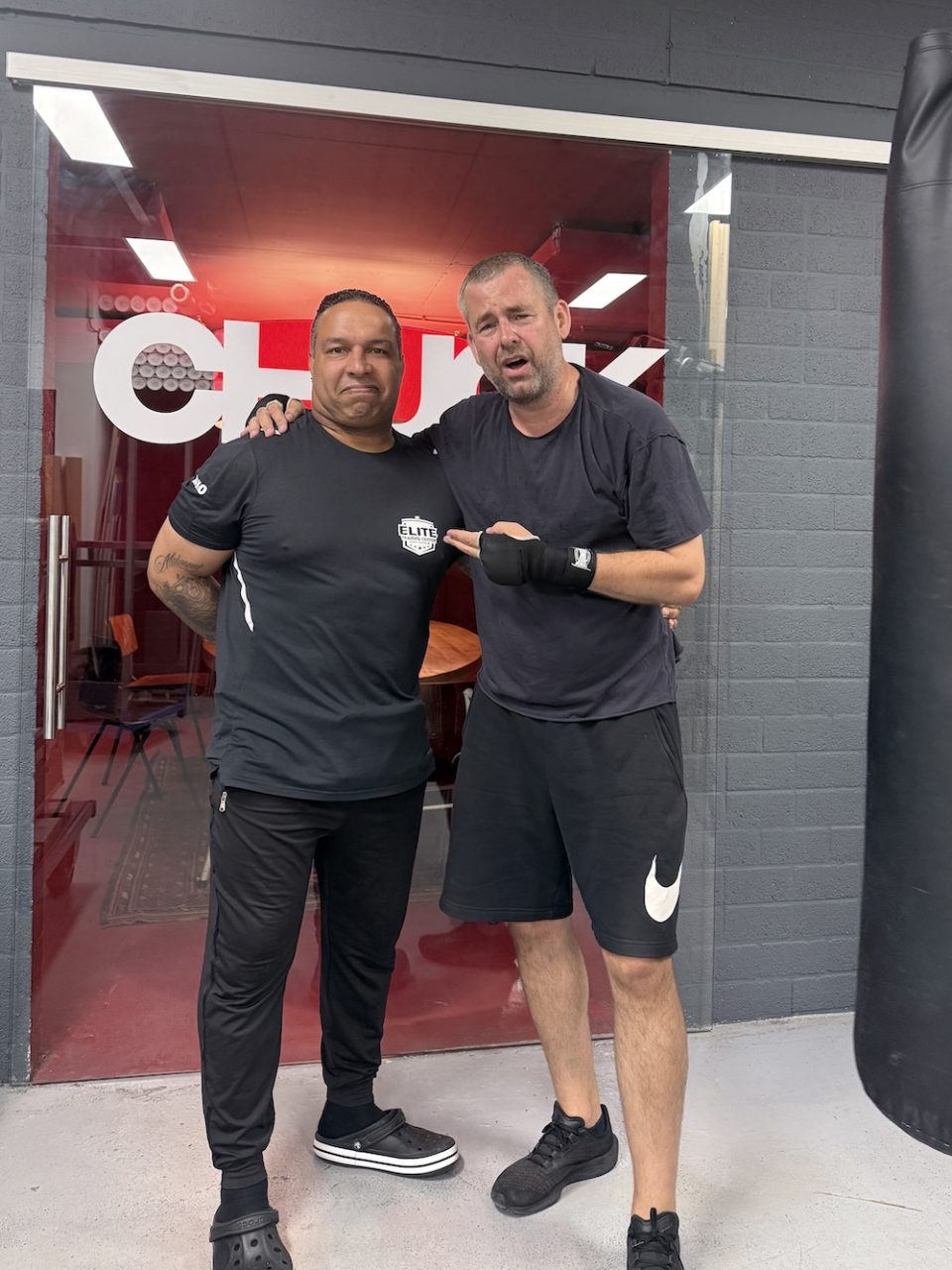
My team and I love to box.
Twice a week, I train with Ben, our boxing instructor-turned-resident-philosopher. Ben is obsessed with the sport. Not just with punches and pads but with the thinking behind movement, timing, and control. And sometimes, unknowingly, he teaches me more about brand strategy than any marketing textbook ever could.
Lately, I’ve been dealing with a tennis elbow. My right arm is off. Not useless but awkward, painful, and weak. One evening, mid-session, I told Ben, “There’s no way to do this sport right with a lame right arm. I can’t generate impact. I’m off-balance. What’s the point?”

He paused, smiled, and said, “Ever heard of Jake Peacock?” I hadn’t. But what followed shifted my perspective.
Jake is a professional Muay Thai fighter. He also has one arm. A birth defect left him without a right hand or forearm. But here’s the thing: Jake wins fights. Not despite his differences, but because of how he has adapted to them. He didn’t mimic fighters with two arms. He re-engineered the game to suit his own body, turning what others might see as a weakness into a strategic edge.
Most food and drink brands live in that same reality.
You’re most likely not McDonald’s, KFC, or M&M’s. You might not have decades of heritage, a billion-dollar ad budget, or a sonic logo everyone can hum. But that doesn’t mean you throw in the towel. It means you approach the ring differently.
Here’s what we can learn from Jake Peacock about building powerful, effective, and distinctive food brands. And if you do it right, you might just win.
Stop competing on their terms
Jake doesn’t fight like a traditional athlete. He built a style around what he can do: ferocious kicks, unpredictable movement, and unique angles that throw opponents off.
Food brands should do the same. If you don’t have fifty years of heritage or a famous bada-pa-pa-paaa, you have to be clever. Create your own one-two punch. Lean into your strength instead of playing by someone else’s rulebook. Distinctiveness is your weapon—not a nice-to-have but a must-have.
Find your real strengths (they’re not where you think)
Jake’s lower body is abnormally powerful. He had no choice; it had to be. Many food brands are in the same boat: underfunded, unknown, constrained by category rules or advertising regulation. Just think about the HFSS advertising ban in the UK, which restricts how food brands can advertise “less healthy” options online. Like others around the world, these parameters require that food brands become stronger in other areas if they wish to survive and cut through the sea of sameness.
You can’t outspend Coca-Cola on their media budget. But maybe your founder has a story that punches harder. Maybe your supply chain is fresher, faster, fairer. Or like the beer brand Poretti, maybe your origin story unlocks storytelling gold—in their case, serving up narratives from where the brewery was born.
My gut feeling? There’s often a specific something hiding in your product that’s worth talking about. Look for power in your legs, not just your fists.
Make your difference your signature
That half-arm? Jake doesn’t hide it. It’s part of his identity. It surprises opponents, changes the rhythm, and becomes part of the story.
Food brands should do the same. Suppose you’ve got an odd name, an unexpected flavor, or packaging that doesn’t fit in. Good. Embrace it.
Take Tony’s Chocolonely, a brand born out of its founder’s purpose-driven mission. It recognized that adhering to category conventions and worn-out tropes, such as silky-smooth chocolate, would do little to foster meaningful change. While its messaging (“Together we’ll end exploitation in cocoa”) is powerful and evocative, the brand backs this up in a way that is unmistakably Tony’s. Namely, by creating uneven bars to symbolise the chocolate industry’s inherent inequality.
Distinctive food brands are never neutral. Celebrate the thing that makes you weird. It might just be your best hook.
Train like hell
Jake is relentlessly disciplined. He can’t afford to be sloppy; his margin for error is razor thin. That’s true for food brands, too.
According to Sharp’s double jeopardy law, smaller food brands not only have fewer buyers, but they also have less loyal ones. And I’m sure I don’t need to remind you that size amplifies effectiveness. So, you don’t have the luxury of lazy branding. Every touchpoint, from your tone of voice to your packaging, needs to earn its keep.
In a world of copycats and big spenders, distinctiveness isn’t handed out—it’s forged, often in overlooked places. Which means that being an underdog isn’t a setback, it’s a mindset.
Jake Peacock doesn’t fight to be equal. He fights to win differently. So, if your food brand feels like it’s missing something, well, maybe it’s not. Maybe you’re just not using your legs yet. Maybe you need to remember that your weakness might be your secret weapon, if only you reframe the fight.
And maybe—just maybe—this article did exactly that…
Cover image: Рома Пляшко
